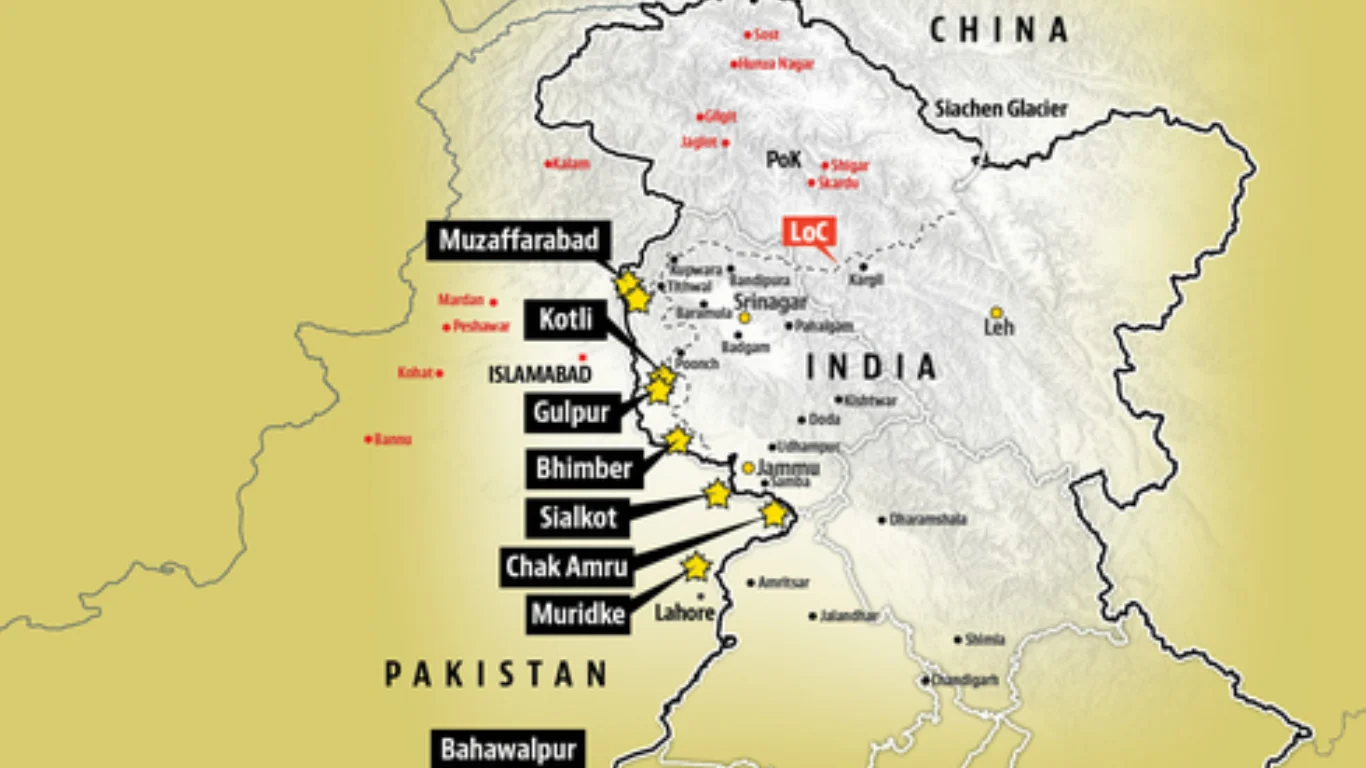
On May 6, 2025, India launched Operation Sindoor, a series of airstrikes targeting nine locations across Pakistan and Pakistan-administered Kashmir. This military action was a direct response to a terrorist attack on April 22 that resulted in the deaths of 26 people, primarily Indian tourists, in Indian-administered Kashmir. Indian officials stated that the operation aimed to dismantle terrorist infrastructure responsible for planning and executing attacks against India. The targets included facilities linked to groups such as Lashkar-e-Taiba (LeT), Jaish-e-Mohammed (JeM), and Hizbul Mujahideen, which have been receiving covert support from the Pakistan Army and its Inter-Services Intelligence (ISI) agency.
Covert Support from Pakistan’s Military and Intelligence Agencies
Anti-India terrorist organizations operating in Jammu and Kashmir have long benefited from systematic aid provided by Pakistan’s military and intelligence agencies. This support encompasses financial resources, logistical assistance, doctrinal training, and military-grade weaponry. Pakistani military officers are known to regularly visit and supervise training sessions at camps operated by these groups, ensuring the continuity and effectiveness of their operations.
Rebranding to Evade Global Scrutiny
To circumvent international scrutiny and portray their activities as part of an indigenous resistance movement, these groups have rebranded themselves under various names. Notable among these are The Resistance Front (TRF), People’s Anti-Fascist Front (PAFF), and Kashmir Tigers (KT). These rebranded entities continue to engage in terrorist activities while attempting to present a facade of local resistance.
Concealment within Civilian Infrastructure
A significant aspect of Pakistan’s strategy involves embedding terrorist training camps and launch pads within civilian infrastructure. Several such facilities targeted during Operation Sindoor were located near army installations and cantonment areas, often disguised as Basic Health Units (BHUs) and Primary Health Centres (PHCs). This deliberate placement within civilian zones complicates efforts to dismantle these networks without causing collateral damage to non-combatants.
Military-Grade Communication Equipment
Terrorist groups have been equipped with advanced communication tools to enhance coordination and operational efficiency. For instance, locations like Sarjal–Tehra Kalan house high-frequency communication setups, facilitating real-time planning and coordination with infiltrated terrorists across the Line of Control (LoC). These facilities enable seamless communication, ensuring synchronized attacks and rapid responses to security forces.
Religious Indoctrination and Radicalization
Deep within Pakistan, facilities such as Markaz Taiba in Muridke and Markaz Subhan Allah in Bahawalpur serve as epicenters for religious indoctrination and radicalization. These centers not only provide shelter to senior commanders but also function as training grounds for intelligence gathering and arms handling. Additionally, they serve as platforms for delivering anti-India propaganda. A notable example is the December 2024 address by JeM chief Masood Azhar at Markaz Subhan Allah, where he incited violence against India.
International Implications and Strategic Considerations
The revelations of Pakistan’s covert support to terrorist organizations have significant implications for regional and global security. The international community faces the challenge of addressing these activities without exacerbating tensions between nuclear-armed neighbors. While India has taken measures to protect its sovereignty and ensure the safety of its citizens, the path forward requires a nuanced approach that balances security concerns with diplomatic efforts to de-escalate potential conflicts.
Conclusion
Operation Sindoor has shed light on the extensive network of support provided by Pakistan to terrorist organizations operating in Jammu and Kashmir. The strategic use of civilian infrastructure, advanced communication systems, and religious indoctrination centers underscores the depth of this covert support. Addressing these challenges necessitates a comprehensive strategy that combines military readiness with international diplomatic engagement to ensure lasting peace and security in the region.

















